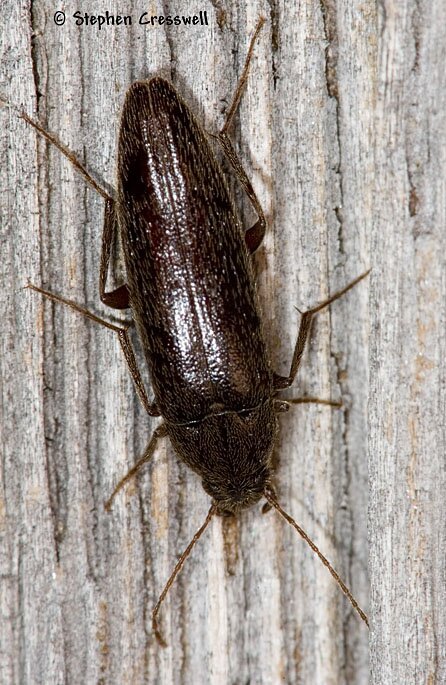
Family: Synchroidae
Subfamily: none defined in Synchroidae
Length: 10-13 mm
Synchroa punctata is one of only two North American species in the family Synchroidae. Six other species are found in Asia. Synchroa punctata has published records from Maine, Vermont, Connecticut, New York, Michigan, Indiana, Ohio, Pennsylvania, West Virginia, and Florida.
The other North American species in this family, Mallodrya subaenea, has a published record only from Ohio.
Members of the family Synchroidae were formerly included in the family Melandryidae, but were split off based primarily on larval characteristics.
One of the key traits of adults in the family Synchroidae is a frontal ledge adjacent to the eye, under which is the antennal insertion point. The antennae are 11-segmented and filiform.
The pronotum at its base is about the same width as the elytra. At the apex of the pronotum the head is narrower than the pronotum. In this family the tarsal formula is 5-5-4.
Members of the family Synchroidae live under bark, where they feed on fungi and rotting wood. They are attracted to lights, and are readily captured in malaise traps. Daniel K. Young, in American Beetles (2001), notes that these beetles may be found at night "as they run over the surface of logs."


